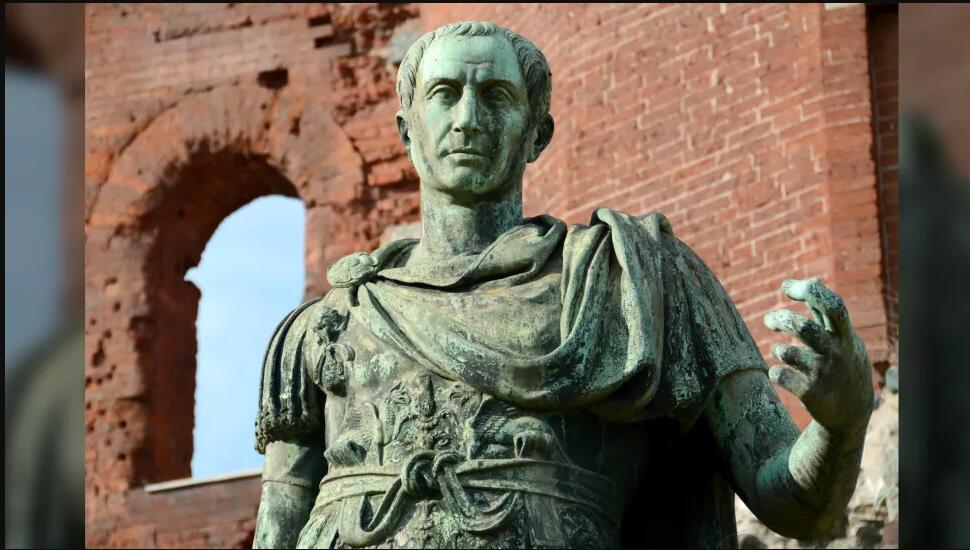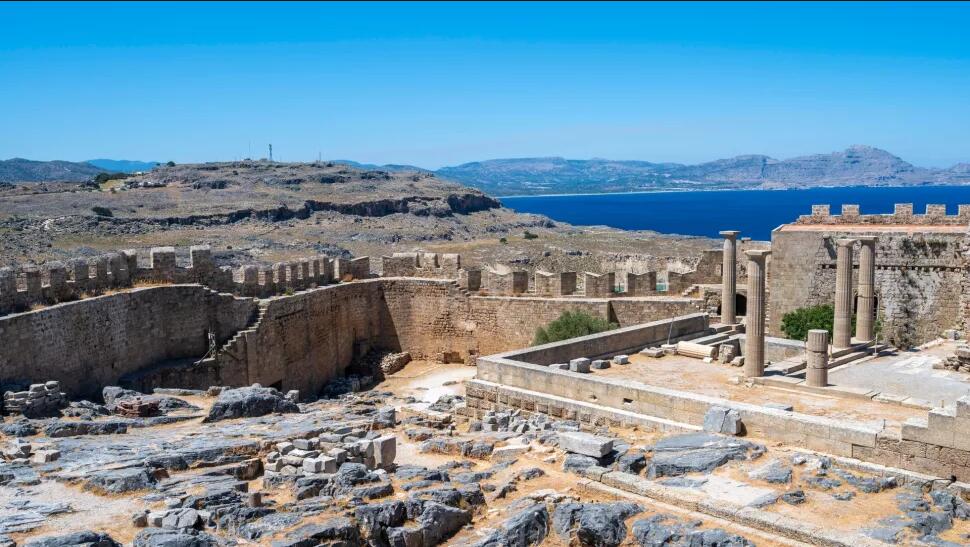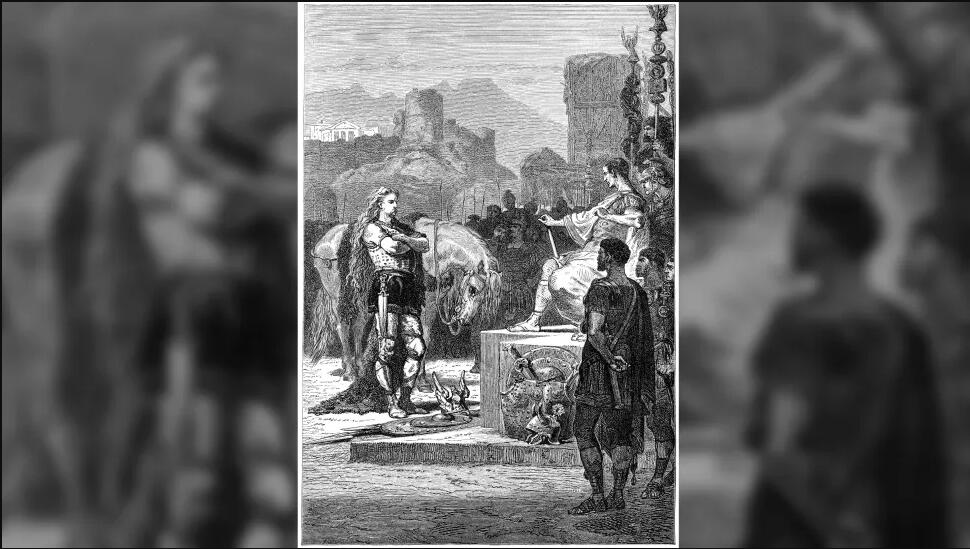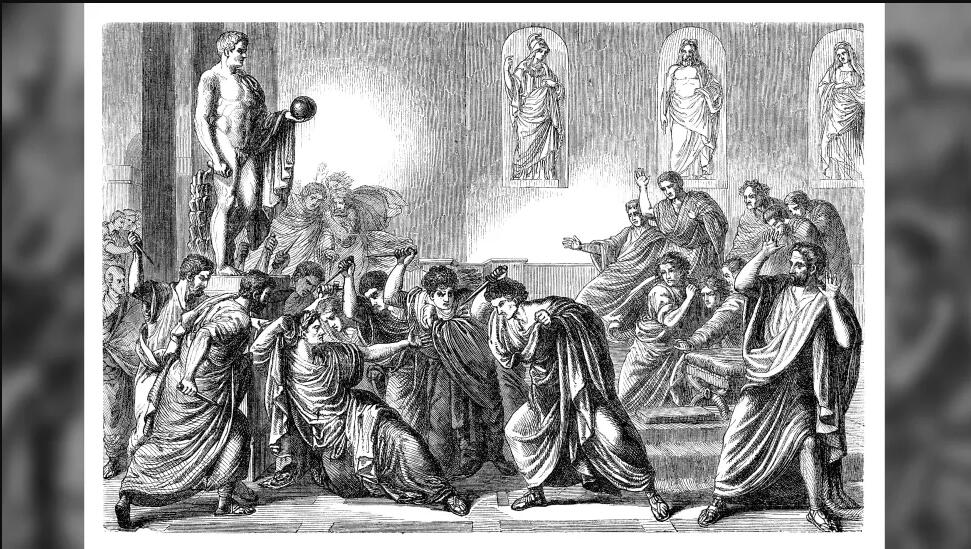DepthReading
Julius Caesar biography: Facts & history
Caius Julius Caesar was born around July 13, 100 B.C. and was stabbed to death in the Roman senate on March 15, 44 B.C.
By the time he was killed he had been appointed Rome's dictator for life and was the most powerful person in the Roman Republic. "He was a politician and statesman who eventually took supreme power in the Roman Republic and made himself a monarch in every practical respect, although he never took the name king," wrote historian Adrian Goldsworthy in his book "Caesar: Life of a Colossus" (Yale University Press, 2006).
"In his fifty-six years, he was at times many things, including a fugitive, prisoner, rising politician, army leader, legal advocate, rebel, dictator — perhaps even a god — as well as a husband, father, lover and adulterer," Goldsworthy wrote.
EARLY LIFE
Caesar's father was also named Caius (sometimes spelled Gaius) and his mother's name was Aurelia. While the term "Caesarean section" is named for him, there is no evidence that this birthing method was used to deliver Julius Caesar. "Although the procedure would later bear his name, there is no ancient evidence to suggest that Caesar was delivered by Caesarean section, although the procedure was known in the ancient world," Goldsworthy wrote.
Caesar was born into a wealthy family with a noble lineage. Members of his family were "patricians, which meant that they were members of the oldest aristocratic class at Rome, who in the early Republic had monopolized power, ruling over the far more numerous plebeians," wrote Goldsworthy. While his family was not particularly powerful at the time Caesar was born, some of his ancestors had held positions as senior officials in the Roman Republic, Goldsworthy noted.
Caesar was politically active as a teenager, opposing Lucius Cornelius Sulla, who became dictator of Rome in 82 B.C., according to the ancient Greek author Plutarch (lived A.D. 46 to A.D. 116) in his book "Parallel Lives." One of Sulla's most prominent opponents, Gaius Marius, had married into Caesar's family, and this may have influenced Caesar's decision. Sulla was fond of having his opponents murdered, and the teenage Caesar was forced to flee Rome, Plutarch wrote. At one point he was captured by Sulla's soldiers but escaped by paying a bribe.
Roman ruins in Lindos, Rhodes. Caesar was en route to Rhodes when he was kidnapped by pirates and held for ransom. (Image credit: imageBROKER/Mara Brandl via Getty images)
Caesar was able to return to Rome after Sulla died in 78 B.C., but he left soon after to study oratory on Rhodes, an island near modern-day Turkey. At some point on his journey he was captured by pirates, who, at least according to several near-contemporary writers, fatally underestimated Caesar. "When the pirates demanded twenty talents for his ransom, he [Caesar] laughed at them for not knowing who their captive was, and of his own accord agreed to give them fifty," Plutarch wrote (translated by Bernadotte Perrin). Plutarch doesn't say what the talents were made of, but silver is likely. How much a Roman talent could weigh at a given time is a subject of debate among historians but was likely somewhere between 60 to 100 pounds (27 to 45 kilograms) in Caesar's time.
While the money was being collected, Caesar spent time with the pirates. He "wrote poems and sundry speeches which he read aloud to them, and those who did not admire these he would call to their faces illiterate barbarians, and often laughingly threatened to hang them all. The pirates were delighted at this, and attributed his boldness of speech to a certain simplicity and boyish mirth," Plutarch wrote.
However, Caesar's threats to kill the pirates were no joke. After the ransom was paid and Caesar was released, he "immediately manned vessels and put to sea from the harbour of Miletus [in modern-day Turkey] against the robbers. He caught them, too, still lying at anchor off the island," Plutarch wrote, adding that Caesar "took the robbers out of prison, and crucified them all, just as he had often warned them."
CAESAR'S GROWING INFLUENCE
Caesar's political career gradually took off after his return to Rome around 74 B.C., and he used his family's wealth and skills to help grow his power.
"He [had] a large and gradually increasing political influence in consequence of his lavish hospitality and the general splendour of his mode of life," Plutarch wrote.
Caesar was an eloquent speaker who was even able to turn personal tragedies into political gains. When his first wife, Cornelia, died in 69 B.C., Caesar used her funeral to grow his support by breaking with tradition and giving an oration that appealed to the people and showcased his caring side.
Caesar also spent lavishly, going into debt so that he could continue to give out gifts and buy political support. "He was unsparing in his outlays of money, and was thought to be purchasing a transient and short-lived fame at a great price, though in reality he was buying things of the highest value at a small price," Plutarch wrote. A pattern emerged where Caesar was elected or named to a position, spent large amounts of his own money on public projects, games or other benefits, and then was elected or named to another office.
Caesar also served as a Roman governor controlling part of Iberia from 61 to 60 B.C., where he commanded an army that fought against tribes who opposed Roman rule.
While Caesar was able to buy and maneuver his way into senior positions he was forced to go deeper into debt and eventually formed an alliance with Marcus Licinius Crassus, one of the wealthiest people in Rome, who agreed to financially assist Caesar in exchange for his political support. The two men eventually allied with Gnaeus Pompeius Magnus, also known as Pompey, a powerful Roman general and politician, to form a triumvirate that ruled over the Roman Republic. Caesar married his daughter Julia to Pompey around 59 B.C. to forge a closer alliance.
In 58 B.C., Caesar was given command of a large military force in Gaul and used the opportunity to conquer it, making a name for himself as a military commander. Between 58 B.C. and 50 B.C. his armies gradually conquered Gaul and even succeeded in landing in Britain (though they didn't stay for long). His forces also fought Germanic tribes on the frontiers of what is now Germany.
The death toll was immense. "In his triumph in 46 [B.C.] Caesar listed the number of [enemy] soldiers killed in all his battles — thus not only in Gaul — as 1,192,000," wrote Kurt Raaflaub, emeritus professor of classics and history at Brown University, in the New England Classical Journal in 2021. While the military death toll may be exaggerated, Raaflaub noted that this total doesn't include non-combatants among the people killed during Caesar's military campaigns.
"It was not only the Roman sword that inflicted death on the Gallic population. Large parts starved to death because the harvests were confiscated or destroyed and their settlements and farmsteads burned, or they froze to death when the legions drove them out of their settlements in winter and burned down buildings, villages and towns," Raaflaub wrote.
Caesar documented his military campaign in a series of books collectively known as the "Gallic Wars." While Caesar made claims that he tried to arrange truces and agreements with the tribes from Gaul he also stated that he had no qualms about harming civilians. After one group he called the "Sigambri" fled from his army he "burned all their villages and houses, and cut down their corn," Caesar wrote (translation by W. A. McDevitte & W. S. Bohn). He used the same tactics when he landed in Britain. "Damage should be done to the enemy in ravaging their lands," he wrote.
CIVIL WAR
The triumvirate between Caesar, Crassus and Pompey didn't last. Julia died giving birth in 54 B.C., which ended the marriage alliance between Caesar and Pompey. Crassus, meanwhile, was killed fighting the Parthians in modern-day Turkey in 53 B.C.
Without Crassus to balance power, tensions between Caesar and Pompey increased, and in January 49 B.C. Caesar led his troops across the Rubicon River (the boundary of northern Italy) and marched on Rome. According to some historical records, as Caesar crossed the Rubicon he said the now-famous phrase that's often translated as "the die is cast."
Pompey abandoned Rome and retreated to Greece and the Balkan peninsula to gather reinforcements. He faced Caesar in Greece at the Battle of Pharsalus in 48 B.C., but suffered a decisive defeat. Pompey fled to Egypt, hoping to gain support from Egypt's teenage pharaoh Ptolemy XIII. Ptolemy was supposed to co-rule with his sister-wife Cleopatra VII, but he refused to acknowledge her, and instead he ruled alone while Cleopatra was in exile.
Instead of assisting Pompey, Ptolemy killed him and presented his head to Caesar when he arrived in Alexandria. Ptolemy expected Caesar to react positively at having his enemy removed, but Caesar was not happy and had not wanted the pharaoh to kill Pompey, Plutarch wrote. Caesar stayed in Egypt for about a year, ordering that Cleopatra VII take up her position as co-ruler of Egypt. In response, Ptolemy tried to fight Caesar and Cleopatra but was killed in 47 B.C.
Cleopatra and Caesar began a romance that resulted in her giving birth to a son, Caesarion. Whether the child was truly Caesar's is a matter of debate among historians, and Caesar never acknowledged the child as his own.
SOLE RULE
After Pompey's death Caesar was the sole ruler of the Roman Republic, but his battles were not over.
While Pompey was dead there were still forces that were loyal to him, and some Roman senators, such as Cato the Younger, refused to accept Caesar's rule. Caesar fought successful battles against these forces in North Africa and Spain. There were also battles against Pontus, a Black Sea kingdom that Pompey had defeated just a few decades earlier. After a successful battle against a force from Pontus, Caesar supposedly uttered words in Latin that are translated as "I came, I saw, I conquered," or "I came, saw and conquered." But no matter how much conquering Caesar did there were still many in Rome who opposed the idea of one man, Caesar in particular, having so much power. This resentment came despite the fact that Caesar was very willing to pardon former opponents.
"His regime was not repressive and he pardoned and promoted many former enemies," Goldsworthy wrote. In contrast, Sulla, who had been sole ruler of Rome between 82 B.C. and 78 B.C. had thousands of his fellow Romans murdered after he took power.
A 19th-century engraving of the assassination of Julius Caesar in the Roman senate. (Image credit: Grafissimo via Getty Images)
In 45 B.C. Caesar implemented a new calendar system in Rome, now called the Julian calendar, which featured 365 days a year plus an extra day in February every four years. This calendar system, which Caesar learned about in Alexandria, brought the Roman calendar closer in line to the actual seasons. The month that Caesar was born was eventually named "July" in Caesar's honor.
The new calendar "was a far more significant outcome of his visit to Egypt than any dalliance with Cleopatra," wrote Mary Beard, a professor of classics at the University of Cambridge, in her book "SPQR: A History of Ancient Rome" (Profile Books, 2015).
In January 44 B.C., the Roman senate named Caesar "dictator for life." While Caesar had enough overall support from the senate to get the measure passed there were many senators, led by Marcus Junius Brutus and Gaius Cassius Longinus, who were opposed to giving Caesar the title. Brutus and Cassius had fought against Caesar before, but both had been forgiven by Caesar and were able to retain their positions in the senate. On March 15, a date known as the Ides of March, a group of senators stabbed Caesar to death in the senate itself.
In the wake of Caesar's death three major factions amassed power in Rome. One was led by Octavian, Caesar's great-nephew, who in Caesar's will was named as his adopted son and heir. The other was led by Mark Antony, one of Caesar's generals, while the other faction was led by Brutus and Cassius. Rome once again fell into civil war.
Category: English
DepthReading
Key words:





